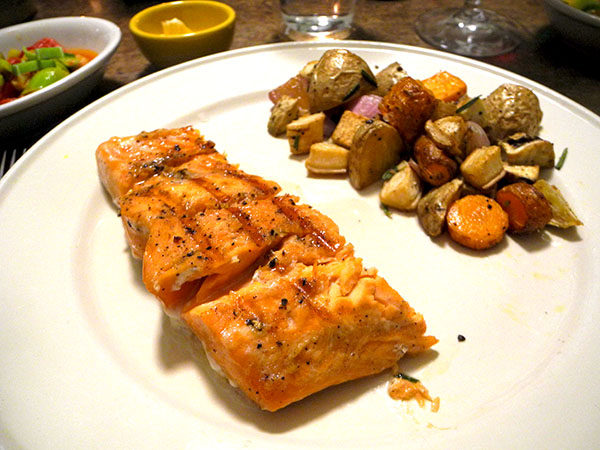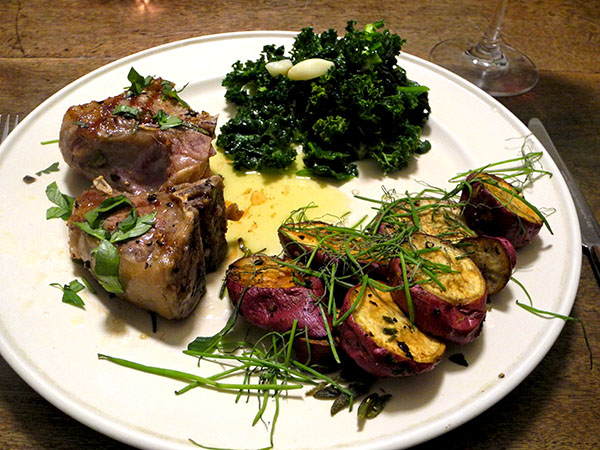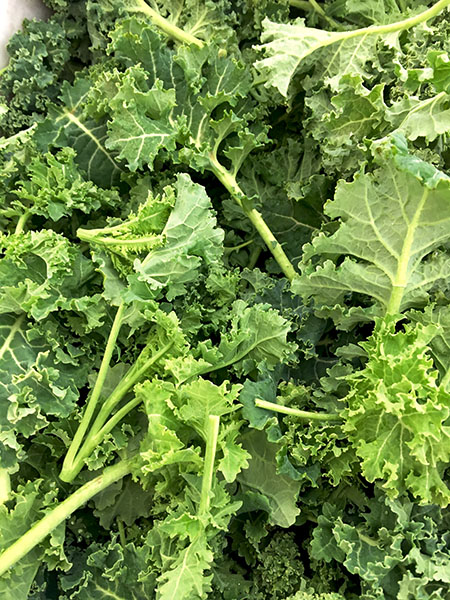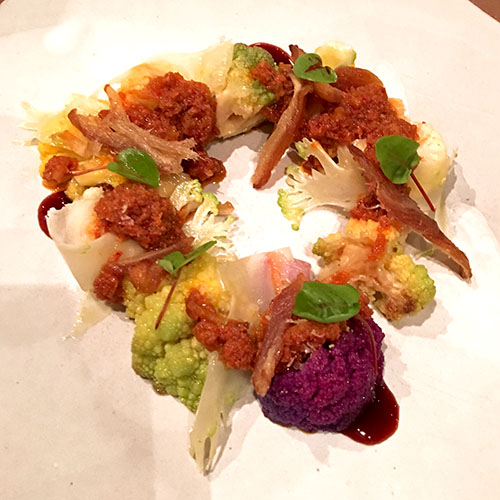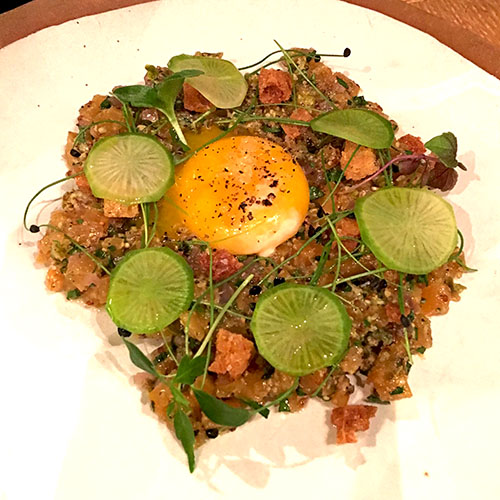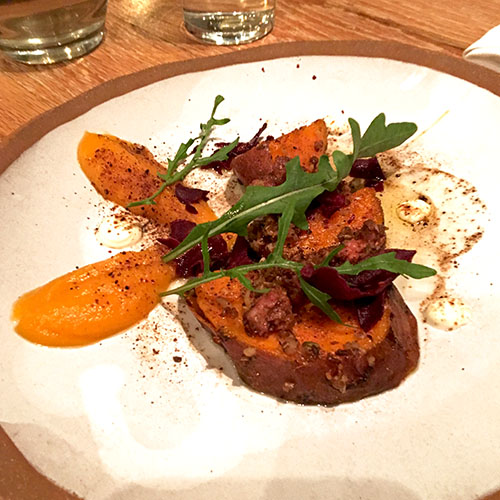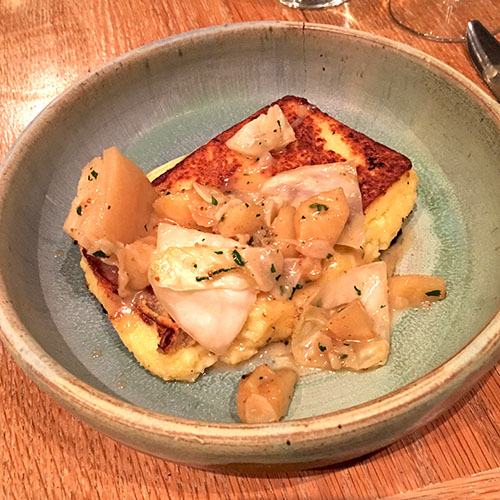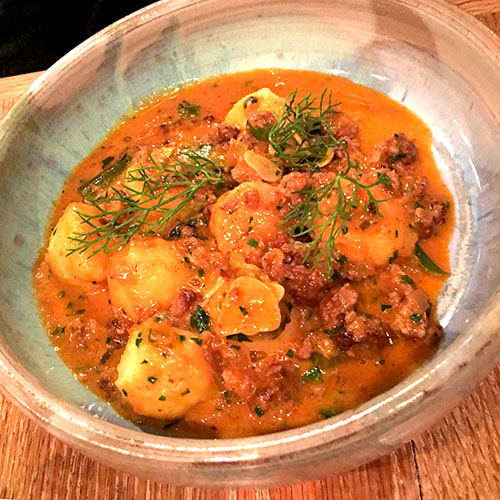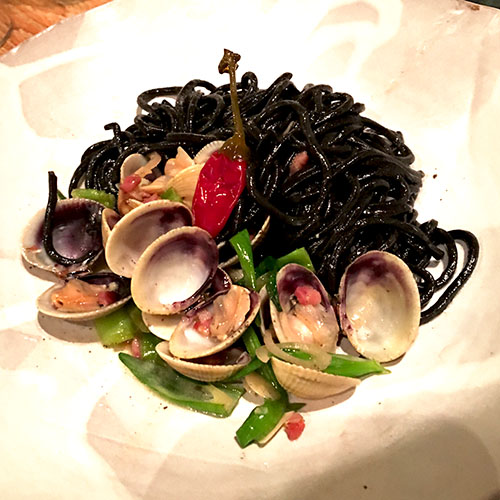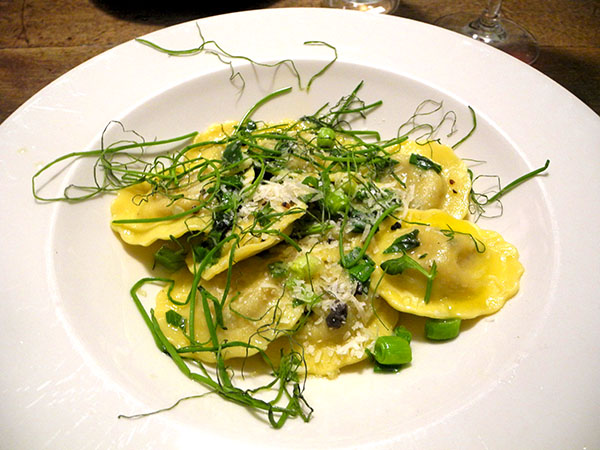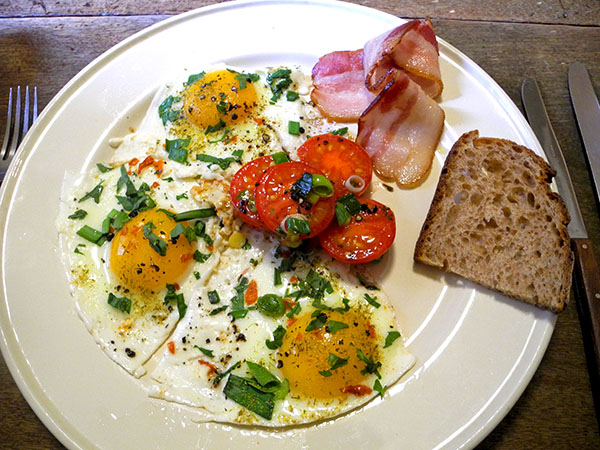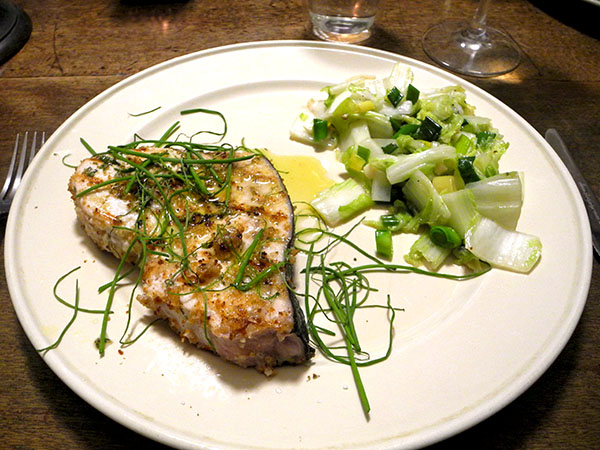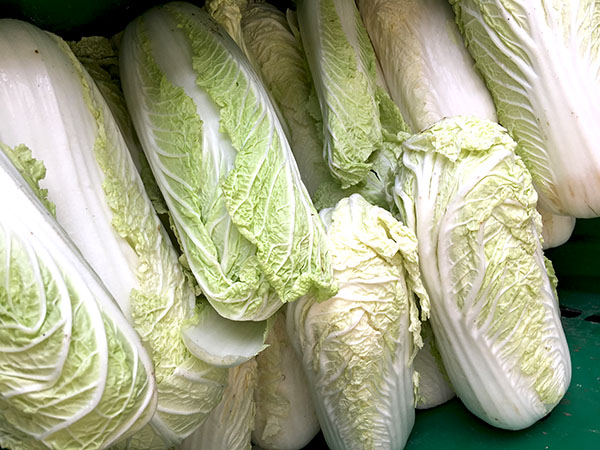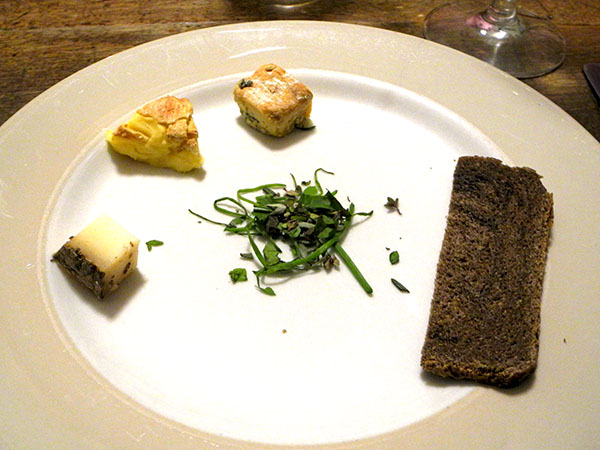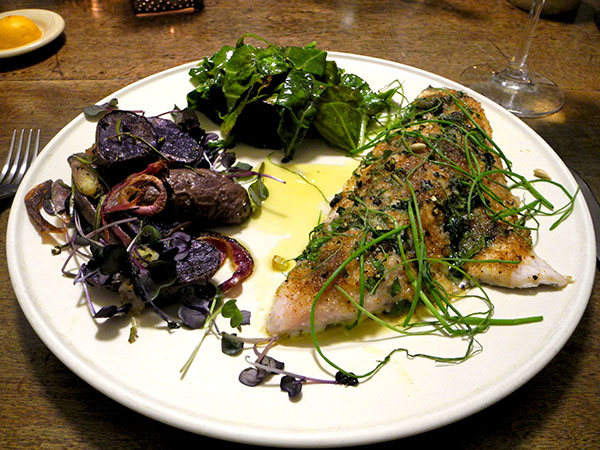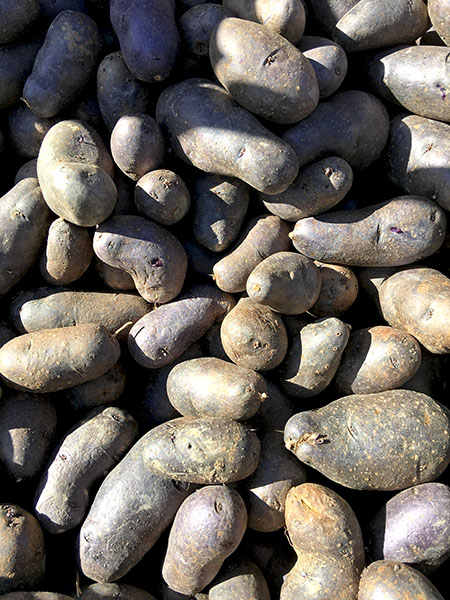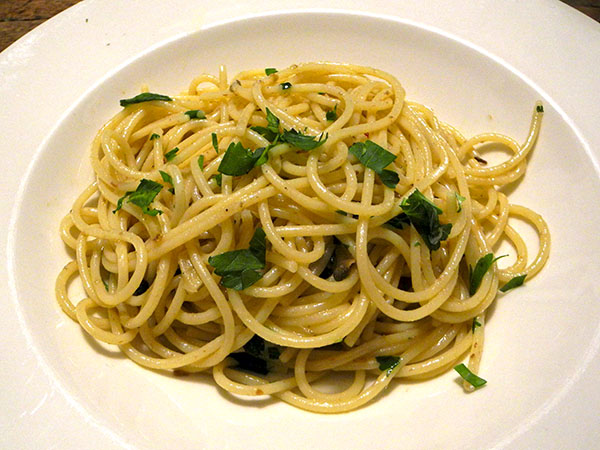
It’s sometimes called ‘midnight pasta’. I’ve cooked this simple dish many times, and it’s shown up on this blog four times before. I wrote last time, “It never fails to satisfy whatever either of us was looking for in a meal at the moment; usually it was when we didn’t have the time or patience to come up with something more complicated.”
It’s a great dish.
And so simple.
- approximately 8 ounces of Afeltra spaghetto, from Eataly, boiled, but only until still pretty firmly al dente, tossed inside the same pot in which it had cooked with a very savory sauce (created with 4 garlic cloves from Trader Joe’s, roughly chopped, cooked in about a third of a cup of olive oil over low-medium heat until softened and beginning to brown, then 4 salted anchovies, well-rinsed, added to the pan and mashed with a wooden spoon, a tablespoon of Mediterranean organic wild capers in brine (from a Providence, RI distributor), rinsed and drained, half of one dried Itria-Sirissi chili, peperoncino di Sardegna intero from Buon Italia), along with several tablespoons of chopped parsley from Eataly, and a little of the reserved pasta water, then simmered for another minute or so while the sauce was both emulsified and slightly reduced, the mix distributed in two bowls and sprinkled with a little more parsley
- the wine was an Italian (Marche) white, Saladini Pilastri Falerio 2015, from Philippe Wines
- the music was Lorenzo Ferrero‘s 1985 comic opera, ‘Mare nostro‘

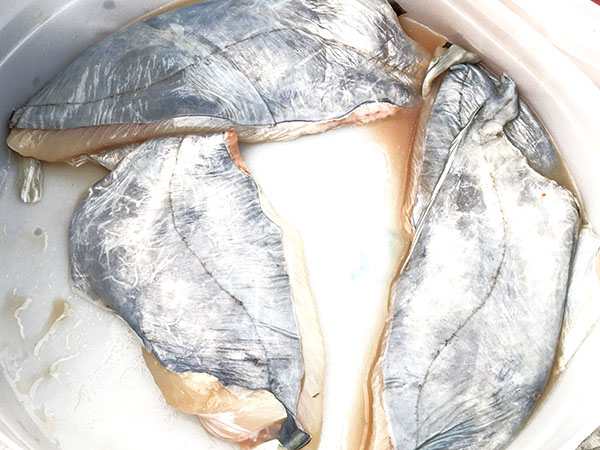
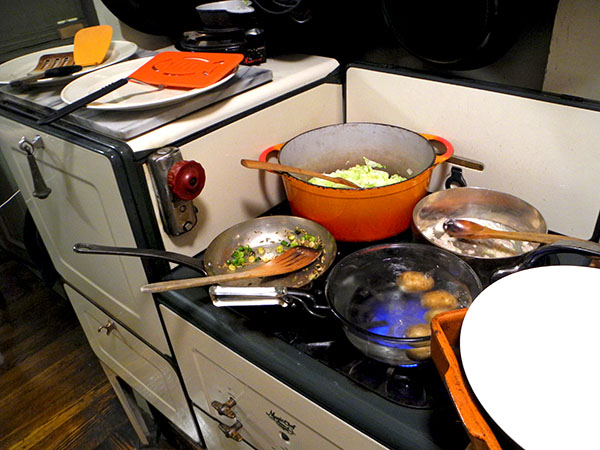
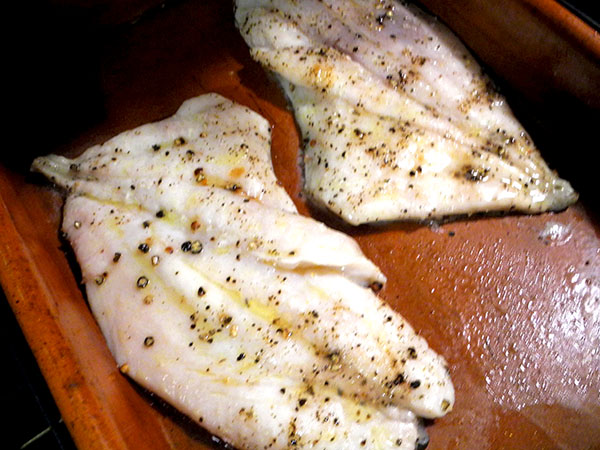
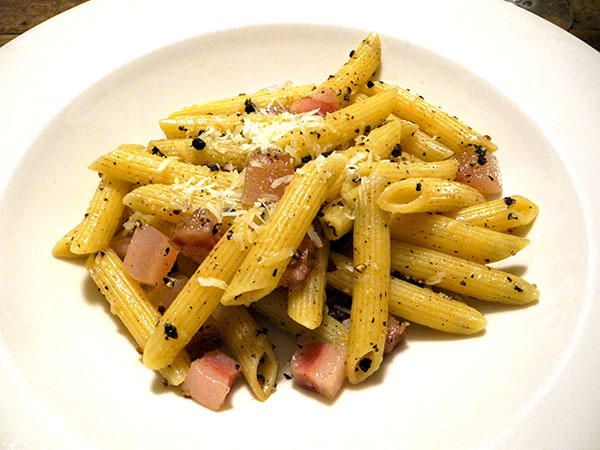 Years ago we used to enjoy this, what I will call ‘perfect meal’, very often, but, maybe because it’s been so long since we were in Italy, or maybe because I’ve become obsessed with cooking local fish, La Gricia seems to have made
Years ago we used to enjoy this, what I will call ‘perfect meal’, very often, but, maybe because it’s been so long since we were in Italy, or maybe because I’ve become obsessed with cooking local fish, La Gricia seems to have made 